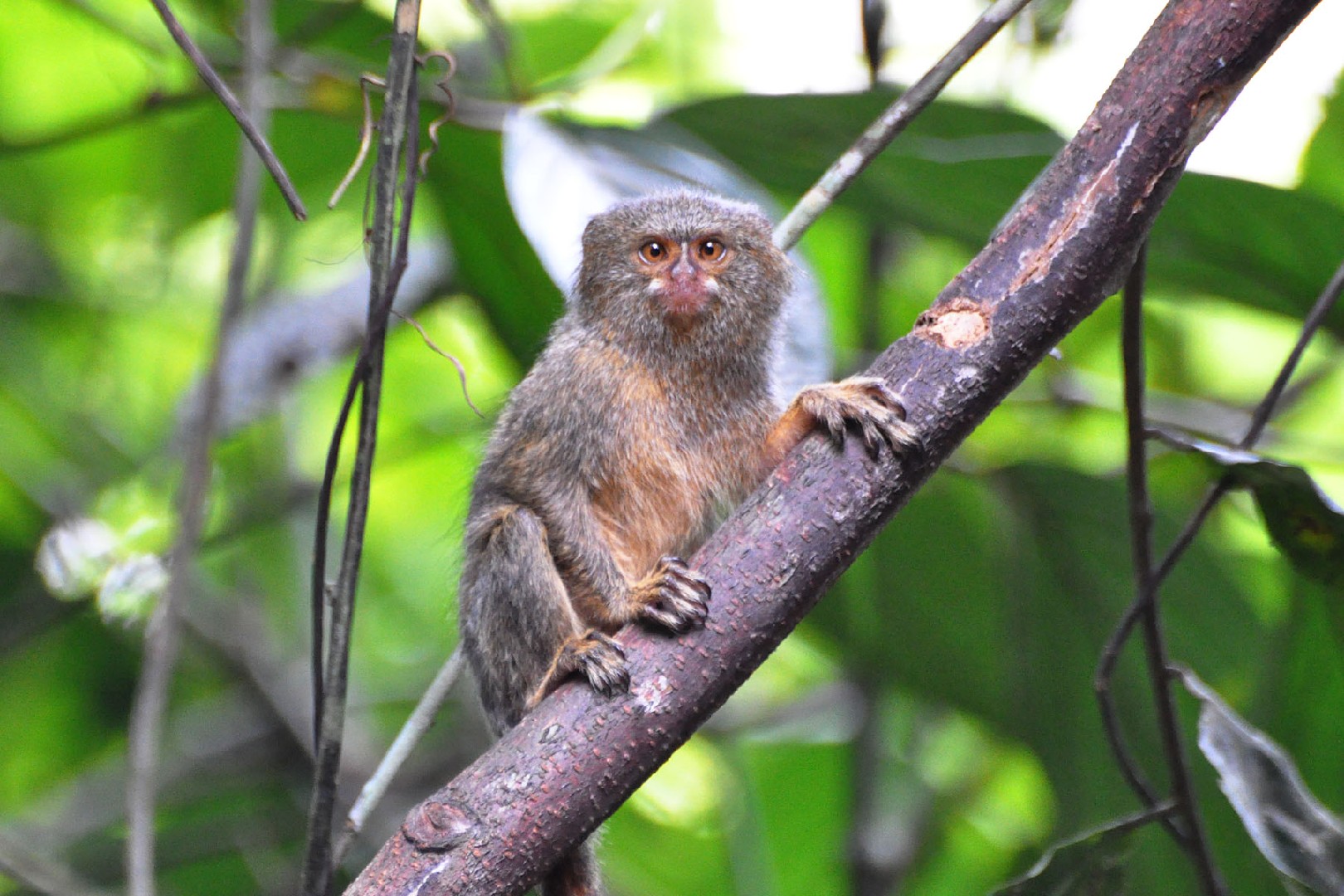Western pygmy marmoset
A species of Pygmy marmoset, Also known as Eastern pygmy marmoset Scientific name : Cebuella pygmaea Genus : Pygmy marmoset
Western pygmy marmoset, A species of Pygmy marmoset
Also known as:
Eastern pygmy marmoset
Scientific name: Cebuella pygmaea
Genus: Pygmy marmoset
Content
Description General Info
 Photo By Don Faulkner , used under CC-BY-SA-2.0 /Cropped and compressed from original
Photo By Don Faulkner , used under CC-BY-SA-2.0 /Cropped and compressed from original Description
Zwergseidenäffchen reach a body length of 12 to 15 centimeters, the tail is significantly longer at 17 to 23 centimeters. Her weight is 85 to 140 grams. They are therefore the smallest monkeys - but not the smallest primates, since, for example, the mouse maki are smaller. Their coat is particularly bushy on the head and falls backwards, it is dark brown or gray-brown on the head and neck, the back is gray and often has black or greenish Einsprenkelungen. The belly is yellowish-brown or whitish depending on subspecies, the paws yellow-orange. The long, bushy tail is ringed black and gray. On the upper lip are two white spots, also on the nose runs a white stripe. As with all marmosets, there are claws instead of nails on the fingers and toes (with the exception of the big toe).
General Info
Lifespan
11-12 years
Diet
Western pygmy marmoset subsists predominantly on a diet of tree exudates, specifically sap and gum. When available, it also consumes insects, fruit, and nectar, supplementing its energy intake.
Appearance
Western pygmy marmoset is a petite primate, often measuring just under 6 inches. Its body is slender, covered in dense fur that is primarily brown with yellow chest and underbelly. The animal's tail is impressive, often twice its body length, and it is ringed with dark and light bands. It showcases large, expressive eyes and distinctive rounded ears. There is little size variation between genders and no significant differences due to age or subspecies.
Behavior
Western pygmy marmoset is a highly social species, often seen in groups termed 'troops'. Primarily diurnal, these animals exhibit intricate foraging behavior, seeking out food sources like fruit and nectar. Communication utilizes vocalizations and visual cues. Fascinatingly, western pygmy marmoset partakes in a 'urine washing' behavior, useful for scent marking and communicating reproductive status.
Population
Decreasing
Scientific Classification
Phylum
Chordates Class
Mammals Order
Apes Family
Arctopitheci Genus
Pygmy marmoset Species
Western pygmy marmoset